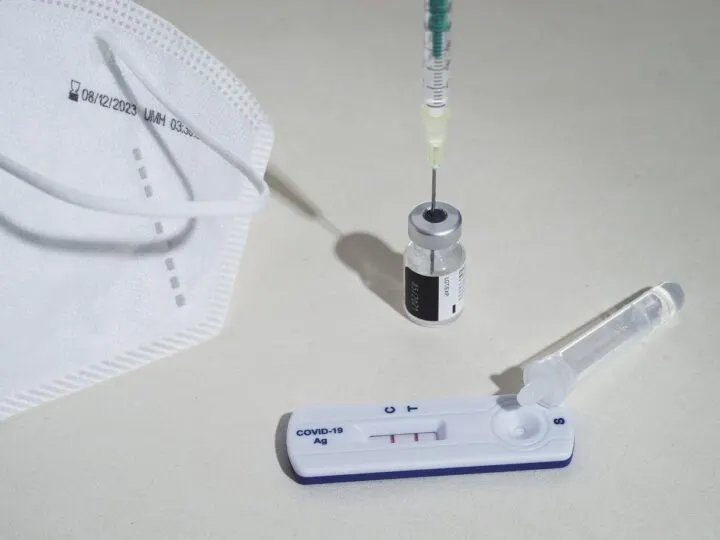This post may contain affiliate links. I only recommend products I use and love. Read the full disclosure here
Last Updated on March 28, 2023 by Alaina
As another year gets underway, the COVID-19 pandemic has reached a new unsettling stage. The occurrence of new variants and rising infection rates have caused numerous people to second-guess their life plans.
Although COVID-19 testing is now commonly discussed, many individuals still have unanswered queries about rapid antigen tests, such as what they contain and how long it takes to receive the results.

Rapid Antigen Test
Rapid antigen test kits are intended to identify an antigen, or fraction of protein, of SARS-CoV-2.
As instructed, you start using a swab to collect a saliva sample from your mouth or nose. You combine the sample with a substance that disintegrates the virus. The fluid is then applied to a testing kit with thinly painted SARS-CoV-2-specific antibodies. Proteins with a Y shape known as antibodies can recognize and bind to foreign materials like antigens.
A colored line on the testing kit appears to show the presence of SARS-CoV-2 if the antibodies attach to the virus enzymes or antigens.
When To Use Rapid Antigen Test Kits
Regardless of a person’s vaccination status, you must get checked and tested immediately with an antigen test kit if you exhibit any signs of COVID-19.
Even if you do not even exhibit any symptoms, SARS-CoV-2 can rapidly spread. The earlier you can isolate yourself and find out whether you have COVID-19, the quicker you can stop the spread of the illness toward others. Initial testing is also important because cutting-edge medications from companies work best when prescribed sooner after infection, right after symptoms manifest.
It’s feasible that you had a negative test if an antigen test comes back negative, but you continue to feel unwell. Separate yourself from other people and speak with your doctor about your signs. If the results are positive, you must isolate yourself at home and get in touch with your doctor as soon as possible.
What you should do varies depending on your vaccination status if you don’t have symptoms but have been in intimate interaction with someone who has COVID-19. The CDC advises waiting between five and seven days of exposure if you are fully immunized before getting a rapid antigen test. Get checked immediately to see if you’re fully immunized. You must undergo another test even if you don’t experience any symptoms.
When To Get the Results
SARS-CoV-2 takes some time to accumulate in your body after exposure, like so many respiratory pathogens. Since there isn’t much highly contagious protein present at this point, a quick test might miss your infection. So many antigen tests suggest sequential testing over several days, with a minimum of 24 hours between tests.
Rapid antigen tests are also most frequently reliable when an individual is contagious since that is when the respiratory system contains the most viral infection.
Conclusion
Despite everything researchers have discovered, there is still much to learn regarding the most effective use of rapid antigen test kits.
One issue is how people utilize tests once their infectious disease risk is minimal versus high. For instance, a person who avoids eating out and wears a mask indoors may be deemed low risk, whereas a person who is unvaccinated and meets with many people who aren’t wearing masks is deemed high risk. Consider buying a black kn95 mask Canada to lower the chances of coronavirus entering the respiratory system.
Researchers also want to understand if people will follow a testing schedule after exposure and if they intend to inform their community’s public health unit of the findings of their home tests.
Nevertheless, rapid antigen test kits have helped many people who have experienced symptoms throughout the COVID-19 pandemic.
